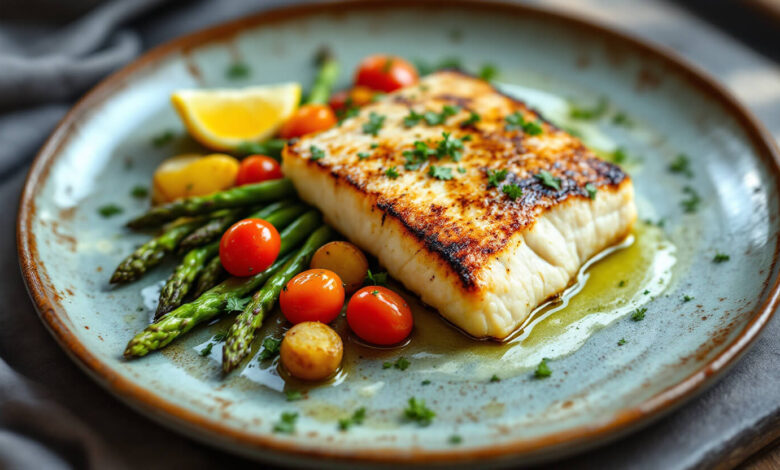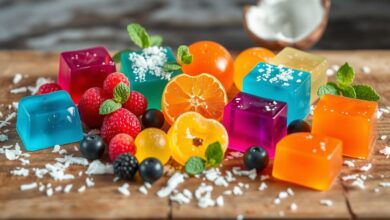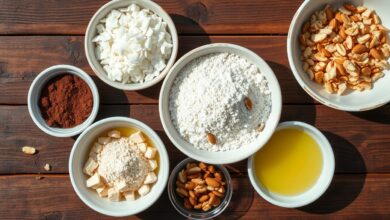The Ultimate Guide to Barramundi: A Premium Fish Experience

Welcome to the most comprehensive guide to cooking barramundi, the crown jewel of sustainable seafood. Whether you’re a home cook looking to expand your culinary horizons or a chef seeking to perfect your technique, this guide will transform how you approach this remarkable fish. Barramundi, with its rich history in Australian and Southeast Asian waters, has emerged as a global superstar in sustainable seafood, offering an unparalleled combination of flavor, versatility, and nutritional benefits.
The Rich History of Barramundi
Cultural Significance
Barramundi, derived from the Aboriginal Australian word ‘burramundi’, means “large-scaled river fish.” For thousands of years, this fish has been central to Indigenous Australian culture, featuring in dreamtime stories and traditional ceremonies. Today, it represents a bridge between ancient traditions and modern sustainable aquaculture.
From Wild Catch to Sustainable Farming
- Traditional fishing methods
- Modern aquaculture development
- Global market expansion
- Sustainability certification processes
Understanding Barramundi
Biological Profile
- Scientific name: Lates calcarifer
- Natural habitat: Coastal waters, rivers, and estuaries
- Size: Can grow up to 6 feet long
- Lifespan: Up to 20 years
- Unique characteristic: Natural sex-changers (protandrous hermaphrodites)
Why Chefs Love It
- Versatile cooking applications
- Forgiving nature during cooking
- Premium presentation potential
- Year-round availability
- Consistent quality through farming
Selecting Perfect Barramundi
Fresh vs. Frozen
Fresh Barramundi
- Look for:
- Clear, bright eyes
- Firm, springy flesh
- Fresh ocean smell
- Bright red gills
- Metallic, clean skin
- Avoid:
- Cloudy eyes
- Strong fishy odor
- Discolored flesh
- Dry, dull appearance
Frozen Barramundi
- Benefits:
- Consistent availability
- Often frozen at peak freshness
- Generally more affordable
- Longer shelf life
- Selection tips:
- Check for freezer burn
- Avoid packages with ice crystals
- Look for vacuum-sealed packaging
- Check production and expiration dates
Comprehensive Preparation Methods
Essential Kitchen Tools
- Sharp fillet knife
- Heavy-bottom skillet
- Fish spatula
- Instant-read thermometer
- Paper towels
- Cutting board
- Fish scaler (for whole fish)
Basic Preparation Steps
- Scaling (if whole)
- Filleting technique
- Pin bone removal
- Portioning
- Skin preparation
Master Recipe: Pan-Seared Barramundi with Herb Butter Sauce
Ingredients (Serves 4)
For the Fish:
- 4 barramundi fillets (6-8 oz each)
- 3 tablespoons high-quality olive oil
- 2 tablespoons unsalted butter
- 4 cloves garlic, finely minced
- 2 fresh lemons
- Fresh herbs (thyme, rosemary, parsley)
- Sea salt and freshly ground black pepper
- 1 shallot, minced
For the Herb Butter Sauce:
- 8 tablespoons (1 stick) unsalted butter
- 2 tablespoons fresh parsley, finely chopped
- 2 tablespoons fresh dill, chopped
- 1 tablespoon fresh tarragon
- 2 tablespoons capers, rinsed
- 1 large shallot, minced
- 2 cloves garlic, minced
- ¼ cup white wine
- 1 lemon, juiced
- Salt and white pepper to taste
Detailed Instructions
1. Fish Preparation (30 minutes before cooking)
- Remove fillets from refrigerator
- Pat completely dry with paper towels
- Score skin in diamond pattern (if skin-on)
- Season generously with salt and pepper
- Let rest at room temperature
2. Herb Butter Sauce (Make ahead)
- Melt 2 tablespoons butter in saucepan
- Sauté shallots and garlic until translucent
- Add white wine, reduce by half
- Lower heat, add remaining butter slowly
- Stir in herbs, capers, and lemon juice
- Keep warm but not hot
3. Cooking Process
- Heat large skillet over medium-high heat
- Add olive oil until shimmering
- Place fillets skin-side down
- Press gently with spatula to prevent curling
- Cook 4-5 minutes until skin is crispy
- Flip carefully, add butter and herbs
- Baste continuously for 2-3 minutes
- Check internal temperature (145°F/63°C)
Alternative Cooking Methods
1. Oven-Baked Barramundi
- Preheat to 400°F (200°C)
- Prepare herb crust or simple seasoning
- Bake 12-15 minutes
- Rest 5 minutes before serving
2. Grilled Barramundi
- Preheat grill to medium-high
- Oil grates well
- Use fish basket for whole fish
- Grill 4-5 minutes per side
3. Steam-Cooked Barramundi
- Perfect for Asian preparations
- Use bamboo steamer
- Steam 8-10 minutes
- Serve with ginger-soy sauce
4. En Papillote (Parchment-Wrapped)
- Great for delicate preparations
- Locks in moisture and flavor
- Cooks in 15-18 minutes
- Perfect for herbs and vegetables
Advanced Techniques and Tips
Temperature Control
- Room temperature fish before cooking
- Hot pan, moderate heat
- Consistent temperature maintenance
- Proper resting period
Moisture Management
- Thorough drying technique
- Proper oil temperature
- Avoiding overcrowding
- Steam management
Seasoning Strategy
- Two-stage seasoning approach
- Salt timing considerations
- Herb incorporation methods
- Sauce pairing principles
Wine and Beverage Pairing Guide
White Wines
- Sauvignon Blanc
- Pinot Grigio
- Unoaked Chardonnay
- Vermentino
Red Wines (Light)
- Pinot Noir
- Gamay
- Light Grenache
Other Beverages
- Craft beer suggestions
- Sake options
- Non-alcoholic pairings
Comprehensive Side Dish Suggestions
Vegetable Accompaniments
- Roasted Mediterranean vegetables
- Asian-style stir-fried greens
- Grilled asparagus
- Sautéed wild mushrooms
Starch Options
- Herb-roasted potatoes
- Wild rice pilaf
- Quinoa with herbs
- Couscous variations
Health and Nutrition
Nutritional Profile (per 6 oz serving)
- Calories: 160
- Protein: 34g
- Fat: 5g
- Omega-3s: 840mg
- Cholesterol: 80mg
- Sodium: 70mg
Health Benefits
- Heart health support
- Brain function enhancement
- Anti-inflammatory properties
- Protein efficiency
- Low mercury content
Sustainability and Environmental Impact
Farming Practices
- Feed conversion efficiency
- Water usage optimization
- Waste management
- Disease prevention
Environmental Benefits
- Low carbon footprint
- Minimal ocean impact
- Sustainable feed sources
- Population preservation
Professional Kitchen Tips
Mise en Place
- Ingredient preparation
- Tool organization
- Timing management
- Temperature control
Quality Control
- Fresh fish assessment
- Storage protocols
- Temperature monitoring
- Portion control
Troubleshooting Common Issues
Problem-Solving Guide
- Overcooked fish solutions
- Skin crisping techniques
- Temperature management
- Sauce consistency fixes
Storage and Handling
Fresh Storage
- Temperature requirements
- Packaging methods
- Timeline considerations
- Quality indicators
Leftover Management
- Proper cooling
- Storage containers
- Reheating methods
- Safety guidelines
Seasonal Considerations
Spring/Summer Preparations
- Light, fresh preparations
- Grilling techniques
- Cold presentations
- Seasonal pairings
Fall/Winter Adaptations
- Heartier preparations
- Warm sauce applications
- Comfort food adaptations
- Seasonal accompaniments
Professional Plating Techniques
Presentation Elements
- Color balance
- Height and structure
- Sauce application
- Garnish selection
Photography Tips
- Lighting considerations
- Angle selection
- Prop usage
- Color enhancement
Conclusion
Mastering barramundi preparation is a journey worth taking. This versatile, sustainable fish offers endless possibilities for creative cooking and healthy eating. Whether you’re cooking for family or preparing for a special occasion, the techniques and knowledge shared in this guide will help you achieve professional-quality results.




